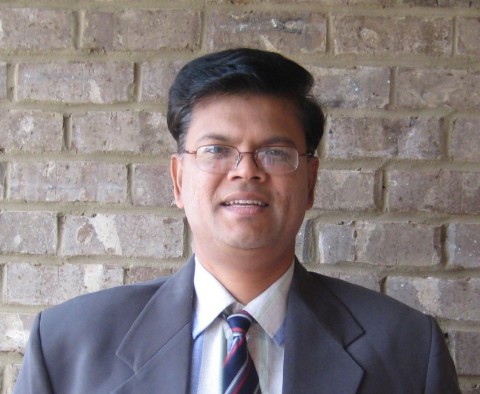My teaching practices strive to engage student’s interest and help them gain knowledge and skills in such a way that they are able to apply what they learned not just in examinations, but outside the classroom as well. Essentially, I believe that the instruction of any course should not solely revolve around mastering the required material but should also underscore the development of independent thinking and the cultivation of skills essential for success in a competitive world. As I continue to explore effective teaching strategies, my goal is to communicate complex issues and ideas to a diverse group of students with varying educational backgrounds. Through the NASA South/Southeast Asia Research Initiative and Global Observations of Forest and Land Use Dynamics (GOFC-GOLD) program, I have been organizing multiple training events in remote sensing and geospatial technologies to enhance capacity building in several countries. My teaching style incorporates hands-on tutorials and the utilization of open-source software. I am committed to continuously learning and refining my teaching methodologies, with the aim of fostering academic excellence and nurturing the personal and professional growth of students.
Vadrevu, Krishna
Bio
My research primarily focuses on using remote sensing and Geographic Information Systems (GIS) for physical and spatial environmental geography studies. More recently, I am focusing on remote sensing and spatial analysis to examine land use/land cover, human-ecosystem interactions and air pollution episodes over the continental US and South/Southeast Asia. My expertise is also in fire ecology and biogeochemistry studies. Formerly, I worked as a Research Scientist (2005-2009) and Postdoctoral researcher (2001-2004) at the Agroecosystem management Program, The Ohio State University (OSU). Specifically, I worked on agriculture, soils and, ecosystem health projects involving remote sensing and GIS components at the OSU. Before coming to the US (2001), I gained my Ph.D. (1997-2000) with remote sensing focus while working at the Indian Space Research Organization (ISRO), National Remote Sensing Center (NRSC), India. My Ph.D. focused on characterizing biodiversity and forest cover dynamics in tropical forests using remote sensing techniques and ecosystem ecology under the guidance of dual supervisors, one Physicist (Remote sensing aspects) and another forest ecologist. In the US, I served as a PI and Co-I on diverse projects funded by NASA, USDA, NSF, etc., all involving remote sensing component. My research has been highly interdisciplinary and the publications are in carbon science, biomass burning/greenhouse gas emissions, agroecosystem studies, land-atmospheric interactions, biodiversity studies, spatial statistics, multi-criteria algorithms, and ecosystem sustainability. I firmly believe that hard work is the key to success. I am married to Anuradha Vadrevu and have two kids who keep us busy.
As of July 2016, I joined a civil service job at NASA Marshall Space Flight Center (MSFC), Earth Science Remote Sensing Scientist, Earth Science Office, Huntsville, Alabama. Also, I am currently serving as Deputy Program Manager for the NASA Land Cover / Land Use Change (LCLUC) program. I also lead South/Southeast Asia Research Initiative (www.sari.umd.edu), which focuses on research, capacity building and training activities. I am continuing as an Adjunct Professor at the University of Maryland College Park, US.
Areas of Interest
- Remote Sensing and GIS applications
- Land Cover/Land Use Changes
- Land Atmosphere Interactions
- Satellite Remote Sensing of Fires
- Biogeochemical Cycling
- Biodiversity and Ecology
- Agroecosystems and Sustainability
My expertise is in Remote Sensing and GIS related research and applications. My research philosophy is to: a). Understand and quantify land use/cover changes, human-earth interactions relating to vegetation, biogeochemical cycling of nutrients, and greenhouse gas emissions using ground-based information as well as Remote sensing and geographical information systems (GIS); b). Consider natural resource problems as part of a complex process-response system involving human interactions. Implement studies that compare processes over a range of spatial scales by synthesizing data such as land-use, vegetation, soils, hydrology, demography and socioeconomic data; c). Establish and teach methodological approaches often using Remote sensing and GIS, biophysical methods in spatial geography, climatology, and ecology for addressing coupled land atmospheric interactions.


